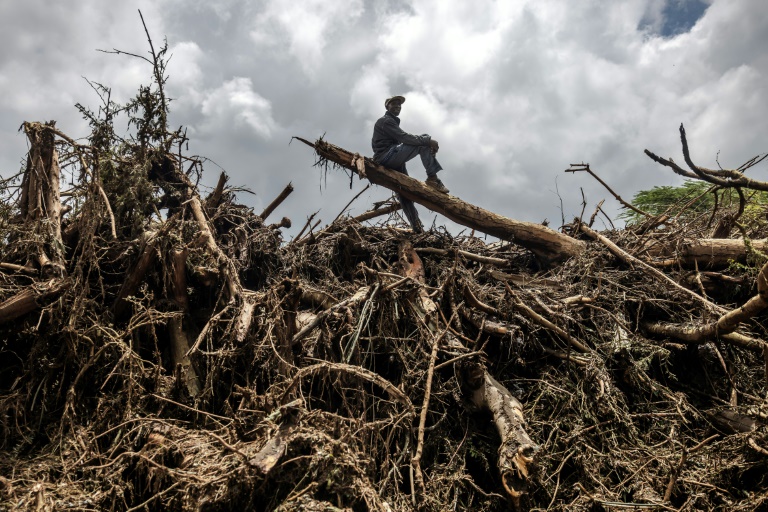Since 1948, more than two million uniformed peacekeepers have served in over 70 United Nations (UN) peacekeeping missions.
They have come from over 120 UN member states. But, a few countries have regularly contributed a significant proportion of their troops. They have also made peacekeeping a foreign policy priority, and adapted their armed forces to fit UN requirements. These states have developed what we call “peacekeeping armies”.
Since the end of the Cold War, the vast majority of these peacekeepers have been deployed in Africa. Many of them by African countries. Today, 11 of the top 20 countries that contribute to UN peacekeepers are African. African states also provide soldiers for operations authorised by the African Union and other African regional organisations.
Why do these countries contribute so many peacekeeping troops so regularly? How do they do it consistently? What are the consequences for the individual soldiers, the military organisations, and the wider practice of peacekeeping? Answering these questions requires a deeper analysis.
In our recent research, we analysed 70 troop-contributing countries. We looked at patterns of troop deployments in peace operations and official security documents.
As debates continue over whether and how to deploy new peace operations in places like Haiti, Sudan, and Gaza, the world should look to states that have explicitly designed their military to perform peacekeeping tasks. It must also reflect on the implications this could have for the development of future operations.
What is a peacekeeping army?
We define a “peacekeeping army” as one that has undertaken institutional reforms to regularly perform the military functions of peacekeeping at a relatively large scale compared to the size of the relevant state’s active force. It must also have ranked international peacekeeping as one of its top priorities.
Our definition is based on four elements: function, adaptation, scale, and salience.
First, a peacekeeping army must be able to perform the military functions required for contemporary peacekeeping.
Second, a traditional army must have adapted to enable more effective performance of peacekeeping tasks. Such adaptation involves relevant institutional reforms, including designing relevant capabilities, force structures, training systems, or doctrine.
Third, in terms of scale, a peacekeeping army should regularly deploy troop contingents representing at least 5% of its active armed forces.
Read more:
UN peacekeeping in Africa is working better than you might think
Finally, states that develop peacekeeping armies afford peace operations a high level of prominence in their national security. They also make them a visible part of their domestic and foreign policy. Our longer article discusses several countries that share these characteristics, including Burundi, Rwanda, Uruguay, and Ghana.
Why do states develop peacekeeping armies?
States develop peacekeeping armies for different reasons and at different times. However, we found some factors are more likely to drive the process than others.
First, reconstructing national and international identities to acquire international status and domestic legitimacy appears to be key. Historically, this has been apparent in states as diverse as Canada, Ireland, Ghana, and Uruguay.
Second, poorer states, like Rwanda and Burundi, might have economic incentives such as the modernisation of military equipment, infrastructure development, and personnel reimbursements.
Third, authoritarian governments might see providing peacekeepers as a form of regime protection and coup-proofing strategy. They do so by both physically distancing security forces outside the country, and by using financial benefits to buttress their loyalty.
Once established, a peacekeeping army can influence individual soldiers, the military organisation, and the government.
For individuals, most soldiers in these armies get the opportunity to deploy abroad. They enjoy the financial, training, and operational benefits that come with peacekeeping without the heightened risks of a war-fighting mission. Nevertheless, some peace operations deploy to active war zones, where it might be dangerous for soldiers.
Read more:
China’s approach to peace in Africa is different. How and why
For the state, the relatively high proportion of soldiers contributed to peacekeeping incentivises a government to adapt its military to the requirements of the organisation authorising the peacekeeping mission. It will also need to maintain at least the image of a stable and professional army. Interestingly, recent studies have shown that international perceptions of an effective army are more important than ensuring democratic civil–military relations.
Three policy implications of peacekeeping armies
In terms of wider peacekeeping practices, three policy implications stand out.
First, states that develop peacekeeping armies have incentives to extend the duration of peace operations for their own benefit. This, even when the local context is not conducive. Once their soldiers are deployed, these governments can gain a degree of negotiating power. Either by expressing reluctance to withdraw troops or threatening to do so if certain requests are not met. However, since these are unlikely to be powerful states, their influence on the duration of peace operations remains limited.
Second, since most peacekeeping armies are in poorer and (semi)autocratic states, they will usually lack financial and material resources to develop and modernise. Consequently, they will likely require material, financial, and technical assistance from external partners. This is perhaps to the detriment of building locally sustainable peacekeeping institutions. In such situations, external peacekeeping training and capacity-building programmes will remain important.
Read more:
Protecting victims of conflict: how African value systems could strengthen humanitarian law
Finally, if more peacekeeping armies emerge in (semi)autocratic states, they are likely to have a higher tolerance for casualties. And, they face less public pressure for transparency and accountability than democratic contributing countries.
Such (semi)autocratic armies might therefore accept deployment on more dangerous missions. Over time, this could set new standards for UN peacekeeping in terms of risk assessment and ongoing debates over the safety and security of peacekeepers.







